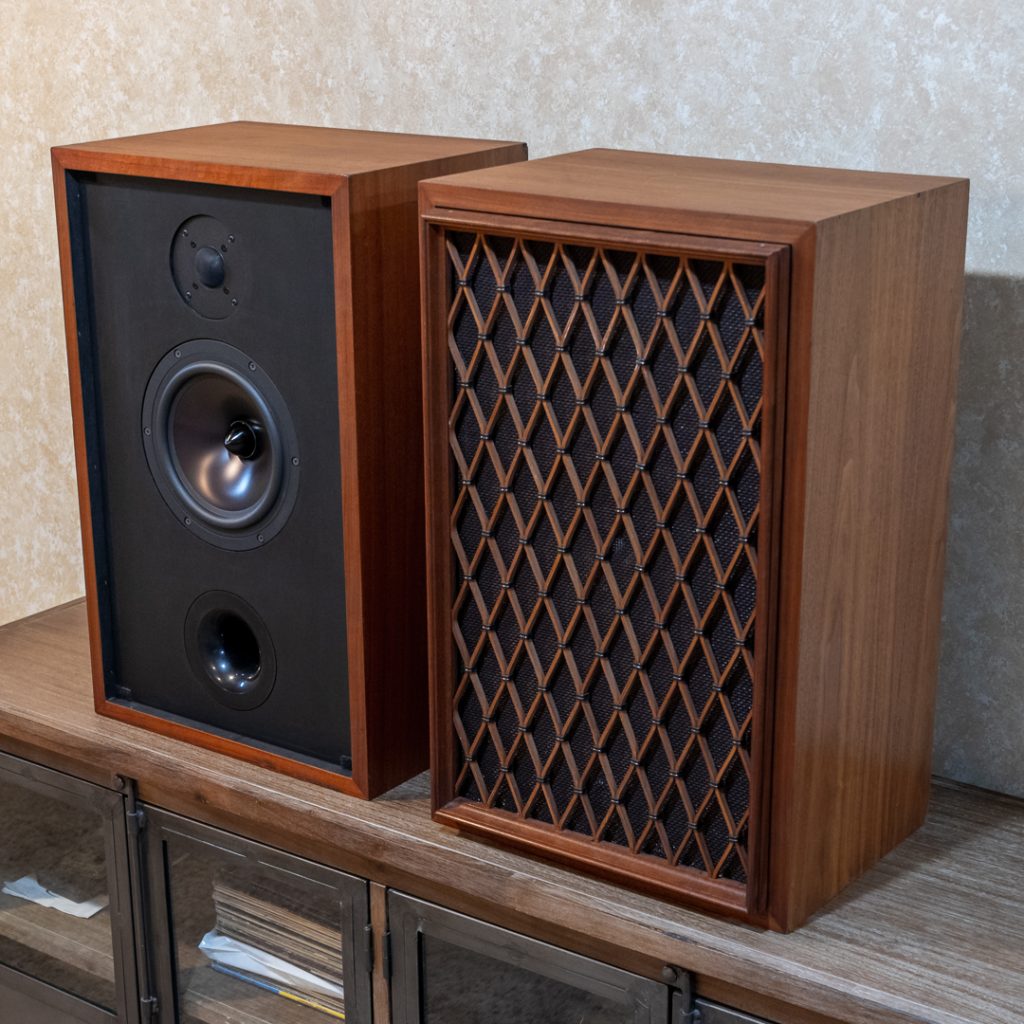
Pioneer CS-99 Remastered
Designer:
Matthew
Project Category:
Loudspeakers/Cabinets
Project Level:
Intermediate
Project Time:
8-20 Hours
Project Cost:
$100 – $500
Project Description:
My cousin approached me about a pair of Pioneer CS-99 speakers he acquired some time ago. They are from 1971 and have great looking cabinets except they did not have the nicest sound. I originally recommended replacing all capacitors in each crossover board. After looking at Pioneer’s original driver selection and crossover topology, I decided these vintage relics would sound much better with brand-new drivers and a custom crossover. Here we go…
Design Goals:
My goal is to create a speaker that mimics the soundstage of a floor-standing speaker while keeping Pioneer’s original CS-99 cabinet and grill intact. I don’t want design complexities and cost of a 3-way speaker and will design a 2-way speaker to achieve full-range sound. My ultimate goal being to wow the listener. I would like these vintage cabinets to create a listening experience that’s entirely not expected.
Driver Selection:
295-356
Dayton Audio RS225-8 Reference Woofer
275-141
Dayton Audio RST28F-4 Reference Tweeter
Pioneer CS-99’s use a 5-way speaker design with a massive 15” woofer. I am changing this original configuration to a two-way speaker design. I chose Dayton’s RS225-8 reference woofer and RST28F-4 tweeter:
Dayton’s RS225-8 has good excursion capability and flat frequency response in the low-mid range. Dayton’s ported volume recommendation for this driver matches Pioneer’s CS-99 cabinet size.
Dayton’s RST28F-4 tweeter has great reviews and I’ve seen designs using this tweeter that successfully cross at a low frequency (1kHz). A low crossover point will allow me to blend this tweeter’s response with Dayton’s RS225-8 woofer (I crossed at 1.4kHz).
Enclosure Design:
Pioneer’s CS-99 is a sealed enclosure design. I am keeping the original enclosure intact and am changing it to a ported design. I am adding a new baffle to support a two-way speaker configuration. I used WinISD to calculate design parameters:
Cabinet volume: 1.5 cu. ft. (estimate after acoustic treatment)
Tuning frequency: 32hz
Port specs: 2” diameter, 4” length
Enclosure Assembly:
See pictures for baffle dimensions and cabinet modifications.
A new baffle was made with ¾” MDF. Driver holes and recesses were cut with a router and Jasper circle jig. The Jasper jig was too small for cutting the woofer’s recess so a custom jig was crafted using a piece of lexan. The tweeter is recessed to the same amount as the woofer so it clears the grill. A jig saw was used to remove material from the original baffle that blocked each driver opening. The finished baffle is screwed and glued to the original baffle.
I finished and restored each cabinet by applying a light coat of golden oak wood stain. I painted each baffle with flat black paint.
I also lined the sides and back of the cabinet with 2” acoustic foam.
Crossover Design:
See pictures for a schematic of the crossover and board-layout of components.
I always like to review other’s designs when starting a project. Luckily, I found a project by Nick, titled The Bee, which uses my driver selection. Thank-you for sharing your project, Nick! I like the topology of the crossover he used in his design:
Third order crossover on the tweeter for extra protection from low frequencies,
Second order crossover on the woofer and
Resister in-line with tweeter to pad its response because the tweeter is more sensitive than the woofer.
I started with this crossover design and changed components to my liking. I selected my crossover point at 1.4kHz. I noticed the RST28F-4 tweeter used in Curt Campbell’s AviaTrix-RST design is crossed at 1kHz; I am taking this to mean my 1.4kHz will not be too low. I used VituixCAD to model my crossover. This is a great tool to use as it allows you to model speakers as inductive-resistive-capacitive elements. You can see a modeled frequency response of my crossover in my picture gallery.
Tips & Tricks:
For neat looking crossover boards—make 90 degree bends in your wires whenever you have to bend a wire.
Conclusion:
My design goals are met; these speakers carry the sound of larger floor standing speakers while keeping their original vintage look. Vocals sound amazing and they’ll hit a bass note or two with ease.
You can see a measured in-room response plot of each speaker in my picture gallery. The plot is an in-room measurement so you are seeing room reflections imposed on each speaker’s actual response. Their response looks rather good for an in-room measurement. I measured each speaker’s response as a quality check to make sure they produce identical sound, and they passed.
I was also curious how Pioneer’s CS-99 speaker grill affects frequency response. The blue-line shows response of one speaker with its grill removed. You can see that Pioneer’s CS-99 grill alters high frequency response between 2.5kHz and 20kHz (and a visibly noticeable dip at 3.8kHz). I’m not sure if the grills make an audible difference (I can’t hear much of a difference with them on or off, if any).
I compared the Pioneer/Dayton speakers to Usher 701 bookshelf speakers designed by Joseph D’Appolito. The Usher’s use a similar ported design with a textile dome tweeter and 7” paper/Kevlar mid-woofer. I’m giving a slight edge to the Pioneer/Dayton. I can hear a harshness in the treble region with the Usher’s that disappears when I switch to the Pioneer/Dayton speakers, especially at louder volume.
Dayton’s RST28F-4 tweeter and RS225-8 woofer combination is a clear winner. I am surprised that I don’t see more DIY designs using these two speakers.
About the Designer:
I have a master’s degree in electrical engineering with an emphasis on control systems. I design and program automated machinery for work and pursue audio projects as a hobby.
Project Parts List:

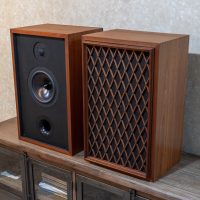
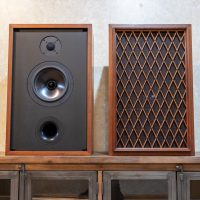
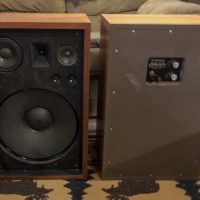
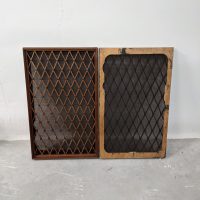


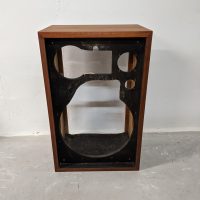
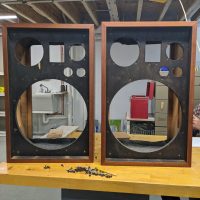
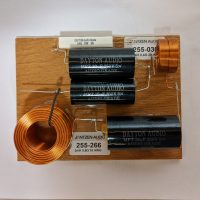

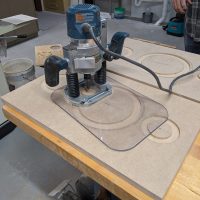
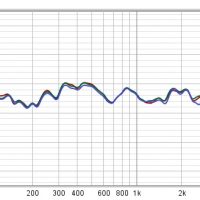
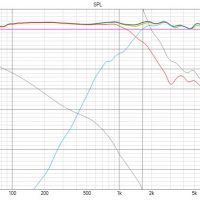
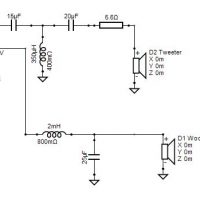
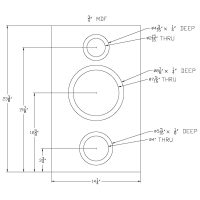
Well done on the upcycle.
About 15 years ago, I picked up the three way version of these Pioneer cabinets. At least these look to be about the same sizes. Made subwoffers with a Dayton 12″ and Dayton Plate amplifier from Parts Express.
Yours look to have a good fit and finish. Nice to see old boxes get a new life.
I bet that sounds amazing. I love that tweeter and I think it is a good match not only for that woofer but also for the old pioneer speaker too.
Have you done baffle dispersion compensation. Because from the measurement I think bass is slightly lacking (baffle loss).
I think bass is slightly lacking from your measurement. Have you done baffle dispersion compensation.
have you done baffle compensation because the bass response is slightly lacking from your measurement
Great question. I did not implement baffle compensation. You would have to measure their response in an acoustic chamber or take a separate measurement that focuses on their lower frequency response to see their true low-end extension. They will play comfortably down to 35-40hz (similar to an 8″ ported subwoofer). My opinion on baffle compensation is that the additional components will not necessarily create a better sounding speaker. More components in a crossover means more manipulation to the original audio signal. Another thing to think about–just because a measured frequency response looks better on paper with the addition of components does not mean that it will actually sound better when you listen to music or an actual audio source.
Hello, I have the same Pioneer cs-99 speakers. I want to do your same mod to mine, only adding additional midrange/midbass making it a 3way. Could you please recommend the best driver to do so from parts express .
What is the “trick” to get the front grills off ?
All ready to build two way system but need clarification on how to measure port since it is a one shot deal. Do I cut tube so whole assembled port measures end to end after assembly? Also what did you do with plate on the back of the cabinets.? By the way the original cross overs were a joke. I would like you to look at some of my other speaker designs. I lack a Masters Degree but am a machine design engineer. Thanks for your work.
I need drawings of the total length of the port. I am an engineer and only work with drawings. The glue up of the port is final. Please respond.
The woofer is close to the cover. I don,t know what the excursion of the woofer is but my amps are massive. The rolled edges are close if not in contact with grills.